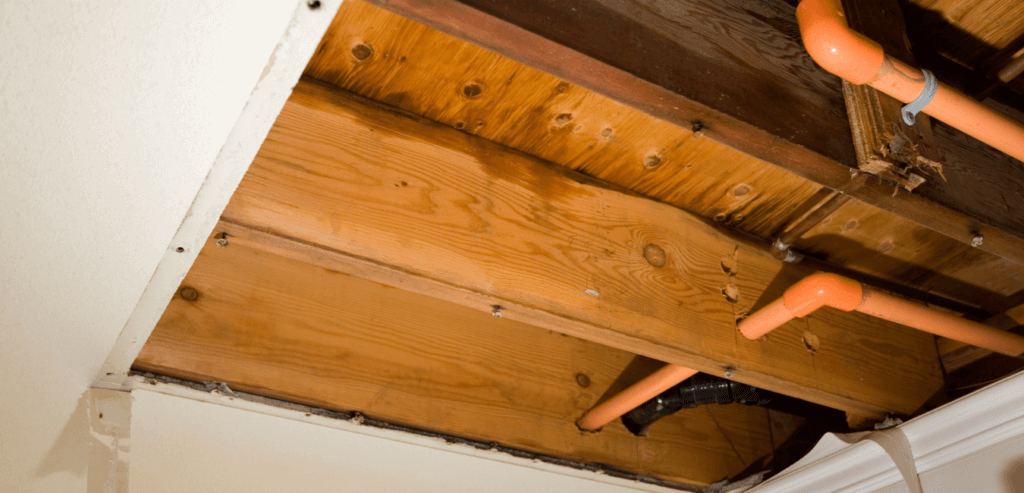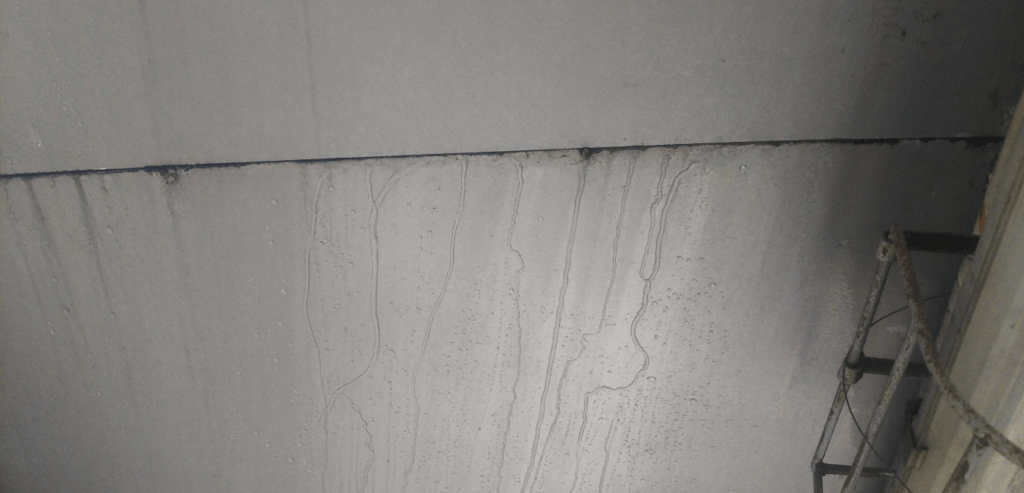As hard as you focus on keeping your commercial property protected, you can’t always prevent a problem like a pipe burst, backed-up drain, or a flood. Unpredictable Tulsa weather such as flash floods, winter storms, hail, and freezing temperatures can cause extensive water damage to buildings.
The cost of water damage and removal in the United States is more than $13 billion annually. The experts at ServiceMaster Restoration by RSI provide water damage services throughout the Tulsa area.
We want to make sure you have the knowledge you need to keep your facility protected against water damage.
How to Mitigate Water Damage in Your Commercial Facility
Conduct an Annual Check of Your Facility
Water Damage Fact: 70% of water heaters trigger water damages before they are 12 years old.
Preventative maintenance may stop water damage accidents from occurring. Get into the habit of inspecting certain elements throughout your building regularly. Create a plan to check, or have an expert review, areas of your building annually to ensure systems are working correctly.
Include places that don’t get much foot traffic, such as lower levels, storage areas, and closets. You will want to check on sites that are prone to leaks more frequently.
Pay special attention to areas of the building where leaks are most likely to occur:
- HVAC system
- Toilets, faucets, and plumbing system
- Windows
- Building foundation
- Sewers
- Sprinkler systems
Don’t forget to check the exterior because leaks can start on the outside of a building. A small roof leak could cause major havoc on a commercial building. Even if your roof is in excellent condition, the likelihood of a roof leak is prevalent in areas where severe wind, freezing temperatures, and hail are frequent.
Keep an eye on your gutters and landscaping to keep water pathways clear. If you have an underground irrigation system, have it checked and cleared out before the cold weather starts.
Document the age and maintenance records for all building systems. Knowing your building equipment’s age – and having them regularly serviced and updated – can save you time and money down the road. It can also help you keep track of equipment warranties.

How to Identify a Water Leak
Fact: Your first sign of a water issue could be in your water bills.
A small 1/8” crack in a pipe loses 250 gallons of water in a single day.
Quickly finding a water issue can help you contain the problem. Some water damage is harder to detect. Knowing what to look for can help you identify a water issue early, saving you in clean-up costs.
- Dark or wet spots
- Cracking, bubbling, or flaking drywall, plaster, or wallpaper
- Pooling water or puddles
- Dampness or humidity in the air
- Sounds of dripping or gushing water
Consider installing a water sensor monitoring system at your business. There are different models and options available.
All of these systems have the same goal:
- Detecting water and moisture early
- Notifying you to address the problem
If you don’t already, consider installing a shut-off valve device onto your water main. Shutting this off will help provide a quick stoppage of the water source. Some sensors can be set to turn off the main water line automatically should there be a leak.
Things to Know About Water Damage
Water Contamination Impacts Clean-Up
Fact: There are three different types of water contamination white, gray, and black water.
The proper clean-up and safety procedures associated with commercial water damage vary depending on the type of water contamination. We categorize water into three categories: white, gray, or black, depending on the contaminants. The kind of water impacts the clean-up protocols.
- White Water: This water comes from a hygienic source such as a water line, snow, or rain. Although less to clean up than other water damage types, it still costs an average of $3.75 per square foot to clean.
- Gray Water: This is water that has had some exposure to contaminants. It would include bath water, washing machine or dishwasher discharge, aquariums, or other water that has contaminants that are not considered pathogenic. Due to the pollutants, it costs more to clean up this water, an average of $4.50 per square foot.
- Black Water: The most dangerous and costly water clean-up is black water. This water has extensive pathogenic contamination and is unsanitary. It costs $7 per square foot to clean this sewage, chemical waste, or other water that has been sitting for more than 72 hours. Black water can cause more extensive damage and health issues.
Understand Your Business Insurance Policy
Fact: Research shows 75% of businesses are underinsured.
Every insurance policy covers do not cover all water damage. It’s important to familiarize yourself with your specific policy to make sure you have ample protection. There are different insurance policies for water and flood damage. If you live in an area prone to flooding, you may need to purchase a standalone flood insurance policy.
Another consideration is if you rent or own your space. If you rent your space, you should know what your responsibility is and what your landlord is responsible for. You will want to understand your lease and its implications.
Once commercial water damage happens, call your insurance company right away so the process of filing a claim can begin. The insurance company will send an adjuster to evaluate the damage and determine what is and isn’t covered.
The company may be able to guide you through the initial steps you’ll need to take to keep your property protected. The process can take time, so it is vital to get your claim started right away.
Drying Times Vary
Fact: Drying times depend on the materials.
Some may take only a few hours, while others can take days.
Acting quickly after a water issue can help minimize damage and save you money on clean-up. As soon as you notice a water issue, do your best to contain the damage. Once the leak is fixed, you will want to clean up the mess and dry out your space.
You should start by removing all standing water and determining what is salvageable. If you have undamaged materials, you will want to remove them from the water area to keep them safe and unharmed.

Different materials require different cleaning protocols. Some materials like concrete and hard surfaces may be salvageable after water damage, while others such as ceiling tiles and insulation may need to be discarded entirely. You also may need to remove carpeting, padding, sub-flooring, insulation, drywall, cabinets, office furniture, or other porous materials to prevent mold and mildew.
Once non-salvageable materials are removed, you will want to begin drying out your facility. The key to this step is air circulation and movement. To dry out the area, you will want to use fans, wet-dry vacs, dehumidifiers, and air conditioning, whatever you can do to get the air moving.
Water damage can compromise the integrity of a structure and materials. You should have your building thoroughly checked after a leak for any damage that water may have been done to the frame’s integrity.
Mold Can Grow Within 24-48 Hours of Water Exposure
Fact: Once water damage has occurred, mold can develop in as little as 24 to 48 hours.
Even after you remove the water, moisture can hide in walls and underneath floors, eventually leading to mold growth. It’s essential to have a mold prevention specialist inspect your building to ensure mold isn’t growing or spreading through your property.
Read more about mold caused from water damage.
You should take care of excess water, moisture, and humid conditions right away to reduce mold growth risk. Hiring a professional company to extract all water helps ensure that even hidden moisture underneath flooring or walls is adequately removed.
Contact the Experts at ServiceMaster Restore
Fact: The experts at ServiceMaster Restore are available 24/7.
If disaster strikes, contact the professionals at ServiceMaster Restore. We understand how to deal with the complexities surrounding water damage restoration.
Our trained and knowledgeable specialists are ready to get your company back to normal. We provide water damage services throughout the Tulsa area. We are available 24/7 every day of the year and committed to restoring your facility as quickly as possible.
Contact us today to learn more about our water damage services.
Water Damage Statistic Sources:
https://ipropertymanagement.com/research/water-damage-statistics
https://hotwatersolutionsnw.org
https://www.behance.net/gallery/9664813/Water-Damage-Statistics
https://www.insurancejournal.com/magazines/features/2012/04/16/243594.htm

